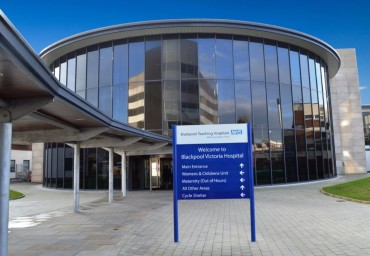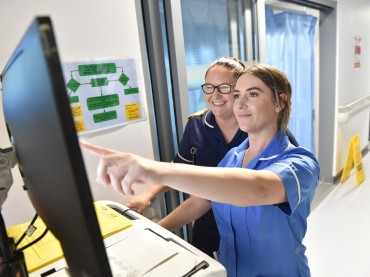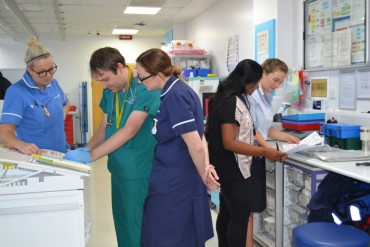
Virtual wards allow patients to get hospital standard care safely and conveniently in the comfort of their own home, rather than in hospital.
The NHS is increasingly introducing virtual wards to support people at the place they call home, including in care homes, allowing appropriate patients who would otherwise be in hospital to receive the level of care, monitoring and treatment they need using straightforward medical and technological devices. Virtual wards help prevent avoidable admissions into hospital and allow for an earlier, supported discharge back into patient’s own homes.
In a virtual ward, new technologies such as wearable devices, oxygen and blood pressure monitors along with apps, provide real-time information on people’s vital signs to a dedicated remote team of health and care professionals. The NHS England definition of a virtual ward is ‘a safe and efficient alternative to bedded hospital care that is enabled by technology’.
Personalised care plans identify what matters to the person to ensure that the support they receive is designed around their desired outcomes. Support may involve face-to-face care from multi-disciplinary teams based in the community.
Research shows that being at home, where patients can see friends, family and pets, is much better for physical health, mental wellbeing and overall recovery rate.
We know that it if people stay too long in hospital, they can experience serious deconditioning, with reduction in muscle strength that affects mobility and can be hard to recover from. This approach enables patients to have all the benefits of being at home, such as privacy, their own bed, and peace and quiet, with the wraparound care of a dedicated clinical team to review them remotely and face-to-face when needed.
We also know that the positive impact of this is that more patients maintain their independence at home and are less likely to be re-admitted to hospital.
Virtual wards can improve patient experience by providing:
- Reassurance: patients know they’re being monitored on an ongoing basis.
- Convenience and choice: patients can receive care and treatment at home, where they often prefer to be, rather than in a clinical setting.
- Improved wellbeing: being at home is much better for physical health, mental wellbeing and overall recovery rate.
We have virtual wards for people experiencing a deterioration in their respiratory, frailty or heart failure condition, or those with a general medical acute illness. Virtual wards provide additional capacity to our existing hospital beds enabling more patients to receive the care they need.
Virtual wards support alternatives to a hospital admission as well as the safe and earlier discharge of patients from hospital, enabling patients to be monitored from home until their treatment is complete. This can:
- Reduce hospital admissions and free up beds.
- Reduce the length of time a patient spends in hospital.
In addition NHS staff tell us that:
- Patients on virtual wards have access to a range of health and care professionals, enabling more holistic and person-centred care.
- Virtual wards help develop a more collaborative culture.
- Professional development is actively promoted and staff derive more professional satisfaction.
Paediatric Virtual Ward

The Paediatric Virtual Ward has made a real difference to families across the Fylde Coast supporting early discharge and preventing hospital readmission. This has allowed families to stay at home together and children to be cared for in their own homes, whilst receiving excellent care from the Children's Community Nursing Team, a positive difference for families.
Paediatric virtual ward patient story:




